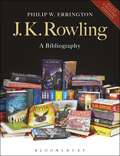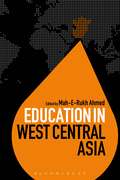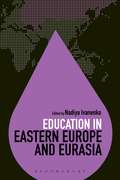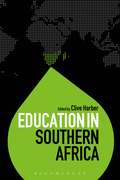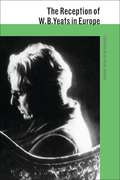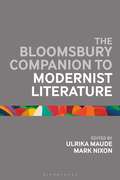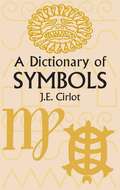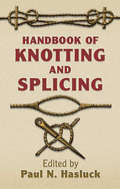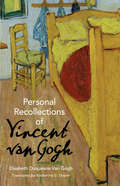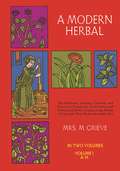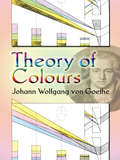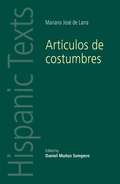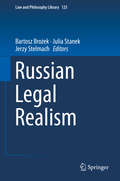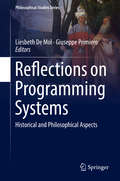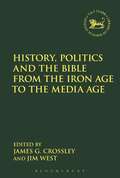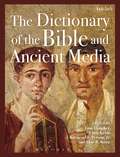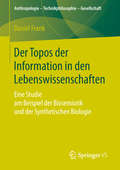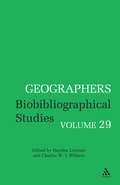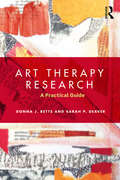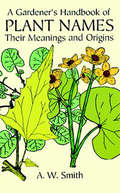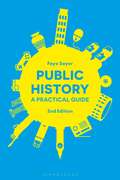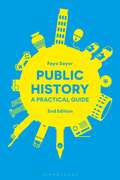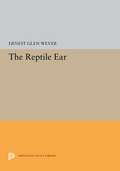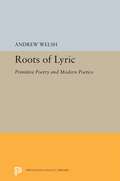- Table View
- List View
J.K. Rowling: Updated Edition
by Philip W. ErringtonThis is the definitive bibliography of the writings of J. K. Rowling. In addition to bibliographical details of each edition of all her books, pamphlets and original contributions to published works, there is detailed information on the publishing history of her work, including fascinating extracts from correspondence, and information on Rowling at auction. This edition has been fully revised and updated to include over 50 new editions published since 2013, including the newly jacketed 2014 children's editions of the Harry Potter books as well as the 2015 illustrated edition of Harry Potter and the Philosopher's Stone. The works of Robert Galbraith are also included.
Education in West Central Asia (Education Around the World)
by Mah-E-Rukh Ahmed Colin BrockEducation in West Central Asia is a comprehensive critical reference guide to education in the region. With chapters written by an international team of leading regional education experts, the book explores the education systems of each country in the region. With chapters covering Iran, Pakistan, Afghanistan, Kazakhstan, Kyrgyzstan, Tajikistan, Turkmenistan and Uzbekistan, the book critically examines the development of education provision in each country as well as local and global contexts. Including a comparative introduction to the issues facing education in the region as a whole and guides to available online datasets, this handbook will be an essential reference for researchers, scholars, international agencies and policy-makers at all levels.
Education in Eastern Europe and Eurasia (Education Around the World #1)
by Nadiya Ivanenko Colin BrockEducation in Eastern Europe and Eurasia provides an essential reference resource to education development and key education issues in the region. Academics and researchers working closely in the field cover education and educational development in Belarus, Moldova, Russia, Turkey, Ukraine, Armenia, Azerbaijan, Georgia and Israel. Each chapter provides an overview of the development of education in the particular country, focusing on contemporary education policies and some of the problems these countries face in implementing educational reform. The book also covers the social and political issues which impact on the education system and schooling and governments' responses to recent local, regional and global events.
Education in Southern Africa (Education Around the World #10)
by Clive Harber Colin BrockEducation in Southern Africa is a comprehensive critical reference guide to education in the region. With chapters written by an international team of leading regional education experts, the book explores the education systems of each country in the region. With chapters covering Botswana, Lesotho, Madagascar, Mozambique, Namibia, South Africa, Swaziland and Zimbabwe, the book critically examines the development of education provision in each country as well as local and global contexts. Including a comparative introduction to the issues facing education in the region as a whole and guides to available online datasets, this handbook will be an essential reference for researchers, scholars, international agencies and policy-makers at all levels.
The Reception of W. B. Yeats in Europe (The Reception of British and Irish Authors in Europe)
by Klaus Peter JochumThe intellectual and cultural impact of British and Irish writers cannot be assessed without reference to their reception in European countries. These essays, prepared by an international team of scholars, critics and translators, record the ways in which W. B. Yeats has been translated, evaluated and emulated in different national and linguistic areas of continental Europe. There is a remarkable split between the often politicized reception in Eastern European countries but also Spain on the one hand, and the more sober scholarly response in Western Europe on the other. Yeats's Irishness and the pre-eminence of his lyrical work have posed continuous challenges. Three further essays describe the widely divergent reactions to Yeats in his native Ireland, during his lifetime and up to the most recent years.
The Bloomsbury Companion to Modernist Literature (Bloomsbury Companions)
by Ulrika Maude Mark NixonIn this book, leading international scholars explore the major ideas and debates that have made the study of modernist literature one of the most vibrant areas of literary studies today. The Bloomsbury Companion to Modernist Literature offers a comprehensive guide to current research in the field, covering topics including: · The modernist everyday: emotion, myth, geographies and language scepticism · Modernist literature and the arts: music, the visual arts, cinema and popular culture· Textual and archival approaches: manuscripts, genetic criticism and modernist magazines· Modernist literature and science: sexology, neurology, psychology, technology and the theory of relativity· The geopolitics of modernism: globalization, politics and economics· Resources: keywords and an annotated bibliography
A Dictionary of Symbols (Dover Occult Ser.)
by J. E. CirlotHumans, it's said, are symbolizing animals. At every stage of civilization, people have relied on symbolic expression, and advances in science and technology have only increased our dependence on symbols. The language of symbols is considered a science, and this informative volume offers an indispensable tool in the study of symbology. It can be used as a reference or simply browsed for pleasure. Many of its entries — those on architecture, mandala, numbers, serpent, water, and zodiac, for example — can be read as independent essays. The vitality of symbology has never been greater: An essential part of the ancient arts of the Orient and of the Western medieval traditions, symbolism underwent a 20th-century revival with the study of the unconscious, both directly in the field of dreams, visions, and psychoanalysis, and indirectly in art and poetry. A wide audience awaits the assistance of this dictionary in elucidating the symbolic worlds encountered in both the arts and the history of ideas.
Handbook of Knotting and Splicing (Dover Maritime Series)
by Paul N. HasluckGenerations of scouts and sailors have learned their lore from this classic reference by a master craftsman. Editor Paul N. Hasluck was a renowned contributor to numerous technical journals as well as the author of several books on crafts and antiques. His clearly written guide--amply illustrated with 208 figures--dates from the turn of the twentieth century and offers timeless instruction for knotters and splicers of ropes.Starting with simple and useful knots, this manual proceeds to more complex varieties: eye knots, hitches, and bends; ring knots and rope shortenings; ties and lashings; and fancy knots. Additional topics include rope splicing; working cordage; hammock making; lashings and ties for scaffolding; and splicing and socketing wire ropes. A helpful index appears at the end, and a list of illustrations identifies the figures in order of appearance.
A Garden of Flowers: All 104 Engravings from the Hortus Floridus of 1614 (Dover Pictorial Archive Ser.)
by Crispin van de PassExcellent reproduction teems with accurate, full-page images of garden flowers. Information on each plant describes leaves, flowers, seed pods, roots, and size and color of each blossom. 104 black-and-white illustrations.
Personal Recollections of Vincent Van Gogh
by Elisabeth Duqesne Van Gogh Katherine S. DreierRejected in their day by painters, critics, and collectors, the visions of Vincent Van Gogh now rank among the most beloved and influential works in the history of Western art. The artist sold only a single painting in his lifetime, despite an abundant oeuvre of more than 2,000 artworks. Today his paintings fetch tens of millions at auction, and visitors from around the world flock to Amsterdam's Van Gogh Museum. The artist's life of grinding poverty, his severe mental illness, and the derision of his contemporaries combined to form a romantic ideal of the tortured artist. Twenty-three years after Van Gogh's suicide, in the wake of his slowly growing fame, the painter's sister published this memoir. An intimate view of the artist's life, art, and philosophy, the book is illustrated with reproductions of several of Van Gogh's most characteristic works, including portraits and landscapes.
A Modern Herbal
by Margaret GrieveIf you want to know how pleurisy root, lungwort, and abscess root got their names, how poison ivy used to treat rheumatism, or how garlic guarded against the Bubonic Plague, consult A Modern Herbal. This 20th-century version of the medieval Herbal is as rich in scientific fact and folklore as its predecessors and is equally encyclopedic in coverage. From aconite to zedoary, not an herb, grass, fungus, shrub or tree is overlooked; and strange and wonderful discoveries about even the most common of plants await the reader.Traditionally, an herbal combined the folk beliefs and tales about plants, the medicinal properties (and parts used) of the herbs, and their botanical classification. But Mrs. Grieve has extended and enlarged the tradition; her coverage of asafetida, bearberry, broom, chamomile, chickweed, dandelion, dock, elecampane, almond, eyebright, fenugreek, moss, fern, figwort, gentian, Hart's tongue, indigo, acacia, jaborandi, kava kava, lavender, pimpernel, rhubarb, squill, sage, thyme, sarsaparilla, unicorn root, valerian, woundwort, yew, etc. — more than 800 varieties in all — includes in addition methods of cultivation; the chemical constituents, dosages, and preparations of extracts and tinctures, unknown to earlier herbalists; possible economic and cosmetic properties, and detailed illustrations, from root to bud, of 161 plants.Of the many exceptional plants covered in Herbal, perhaps the most fascinating are the poisonous varieties — hemlock, poison oak, aconite, etc. — whose poisons, in certain cases, serve medical purposes and whose antidotes (if known) are given in detail. And of the many unique features, perhaps the most interesting are the hundreds of recipes and instructions for making ointments, lotions, sauces, wines, and fruit brandies like bilberry and carrot jam, elderberry and mint vinegar, sagina sauce, and cucumber lotion for sunburn; and the hundreds of prescriptions for tonics and liniments for bronchitis, arthritis, dropsy, jaundice, nervous tension, skin disease, and other ailments. 96 plates, 161 illustrations.
Theory of Colours: Translated From The German, With Notes (Dover Fine Art, History Of Art Series)
by Johann Wolfgang Goethe Charles L. EastlakeThe wavelength theory of light and color had been firmly established by the time the great German poet published his Theory of Colours in 1810. Nevertheless, Goethe believed that the theory derived from a fundamental error, in which an incidental result was mistaken for a elemental principle. Far from affecting a knowledge of physics, he maintained that such a background would inhibit understanding. The conclusions Goethe draws here rest entirely upon his personal observations.This volume does not have to be studied to be appreciated. The author's subjective theory of colors permits him to speak persuasively of color harmony and aesthetics. These notions may evoke a positive response on their merits, but even among those who regard them as pure fantasy, the grace and style of Goethe's exposition provide abundant rewards. Although his scientific reasoning on this subject has long since been dismissed, modern readers continue to appreciate the beauty and sweep of Goethe's conjectures regarding the connection between color and philosophical ideas. In addition, he offers insights into early 19th-century beliefs and modes of thought as well as a taste of European life during the Enlightenment.
Artículos de costumbres: by Mariano José de Larra (Hispanic Texts)
by Daniel Muñoz SempereA collection of satirical articles by the influential nineteenth-century Spanish journalist Mariano José de Larra.
Russian Legal Realism (Law and Philosophy Library #125)
by Bartosz Brożek Julia Stanek Jerzy StelmachThis edited volume explores ideas of legal realism which emerge through the works of Russian legal philosophers. Apart from the well-known American and Scandinavian versions of legal realism, there also exists a Russian one: readers will discover fresh perspectives and that the collection of early twentieth century ideas on law discussed in Russia can be understood as a unified school of legal thought – as Russian legal realism. These chapters by renowned European and Eastern European legal philosophers add to ongoing discussions about the nature of law, especially in the context of developments around our scientific knowledge about the mind and behaviour. Analyses of legal phenomena carried out by legal realists in Russia offer novel arguments in favour of embracing psychological and sociological perspectives on the law. The book includes analysis of the St. Petersburg school of legal philosophy and Leon Petrażycki’s psychological theory of law. This original and multifaceted research on Russian realists is of considerable value to an international audience. Researchers and postgraduate students of law, legal theory and legal ethics will find the book particularly appealing, but it will also interest those investigating the philosophy or sociology of law, or legal history.
Reflections on Programming Systems: Historical and Philosophical Aspects (Philosophical Studies Series #133)
by Liesbeth De Mol Giuseppe PrimieroThis book presents a historical and philosophical analysis of programming systems, intended as large computational systems like, for instance, operating systems, programmed to control processes. The introduction to the volume emphasizes the contemporary need of providing a foundational analysis of such systems, rooted in a broader historical and philosophical discussion. The different chapters are grouped around three major themes. The first concerns the early history of large systems developed against the background of issues related to the growing semantic gap between hardware and code. The second revisits the fundamental issue of complexity of large systems, dealt with by the use of formal methods and the development of `grand designs’ like Unix. Finally, a third part considers several issues related to programming systems in the real world, including chapters on aesthetical, ethical and political issues. This book will interest researchers from a diversity of backgrounds. It will appeal to historians, philosophers, as well as logicians and computer scientists who want to engage with topics relevant to the history and philosophy of programming and more specifically the role of programming systems in the foundations of computing.
History, Politics and the Bible from the Iron Age to the Media Age (The Library of Hebrew Bible/Old Testament Studies #651)
by Jim West Dr James G. CrossleyAs biblical studies becomes increasingly fragmented, this collection of essays brings together a number of leading scholars in order to show how historical reconstruction, philology, metacriticism, and reception history can be part of a collective vision for the future of the field. This collection of essays focuses more specifically on critical questions surrounding the construction of ancient Israel(s), 'minimalism', the ongoing significance of lexicography, the development of early Judaism, orientalism, and the use of the Bible in contemporary political discourses. Contributors include John van Seters, Niels Peter Lemche, Ingrid Hjelm, and Philip R. Davies.
The Dictionary of the Bible and Ancient Media
by Professor Tom Thatcher Chris Keith Professor Raymond F. Person Jr. Elsie R. SternThe Dictionary of the Bible and Ancient Media is a convenient and authoritative reference tool, introducing specific terms and concepts helpful to the study of the Bible and related literature in ancient communications culture. Since the early 1980s, biblical scholars have begun to explore the potentials of interdisciplinary theories of oral tradition, oral performance, personal and collective memory, ancient literacy and scribality, visual culture and ritual. Over time these theories have been combined with considerations of critical and exegetical problems in the study of the Bible, the history of Israel, Christian origins, and rabbinics. The Dictionary of the Bible and Ancient Media responds to the rapid growth of the field by providing a source of reference that offers clear definitions, and in-depth discussions of relevant terms and concepts, and the relationships between them. The volume begins with an overview of 'ancient media studies' and a brief history of research to orient the reader to the field and the broader research context of the book, with individual entries on terms and topics commonly encountered in studies of the Bible in ancient media culture. Each entry defines the term/ concept under consideration, then offers more sustained discussion of the topic, paying particular attention to its relevance for the study of the Bible and related literature
Der Topos der Information in den Lebenswissenschaften: Eine Studie am Beispiel der Biosemiotik und der Synthetischen Biologie (Anthropologie – Technikphilosophie – Gesellschaft)
by Daniel FrankIn der Mitte des zwanzigsten Jahrhunderts hielt der Informationsbegriff insbesondere durch die Molekularisierung der Genetik und die entstehende Kybernetik Einzug in die Biologie und avancierte zu einem der zentralen Begriffe der Lebenswissenschaften. Dass es sich dabei jedoch nicht um einen theoretischen Term handelt, sondern um einen schillernden Begriff, der innerhalb unterschiedlicher lebenswissenschaftlicher Paradigmen ganz verschiedenes bedeutet, lässt sich besonders deutlich am Beispiel der Biosemiotik und der Synthetischen Biologie aufzeigen. In beiden Paradigmen sind mit dem Informationsbegriff und dessen semantischem Feld auch diverse Erklärungsansprüche verbunden, die im vorliegenden Band einer wissenschaftsphilosophischen Kritik unterzogen werden.
Geographers: Biobibliographical Studies, Volume 29 (Geographers)
by Dr Hayden Lorimer Professor Charles W. WithersVolume twenty-nine of Geographers: Biobibliographical Studies has as its subject matter seven essays covering British and French regionalists, one of the world's leading cultural geographers, a quantitative geographer turned historical geographer and student of geopolitics, a pioneering medical geographer and a leading theoretician of geography's multiple engagements with the urban experience. In their different ways and with reference to Australia, Britain, France, Sweden and the United States of America, all were products of - and direct influences upon - the emergence, strength and thematic diversity of geography in the twentieth century. Geographers 29 thus provides key insight into the shaping of a discipline and of its practitioners in modern context.
Art Therapy Research: A Practical Guide
by Donna Betts Sarah DeaverArt Therapy Research is a clear and intuitive guide for educators, students, and practitioners on the procedures for conducting art therapy research. Presented using a balanced view of paradigms that reflect the pluralism of art therapy research, this exciting new resource offers clarity while maintaining the complexity of research approaches and considering the various epistemologies and their associated methods. This text brings research to life through the inclusion of sample experientials in every chapter and student worksheets, as well as a full chapter on report writing that includes a completed sample report. This comprehensive guide is essential reading for educators looking to further the application of learning outcomes such as teamwork, communication, and critical thinking in their practice.
A Gardener's Handbook of Plant Names: Their Meanings and Origins
by A. W. SmithFirst compact dictionary to combine definitions of botanical names in general usage with information on their derivation and guides to pronunciation. A monumental index provides a cross-reference from some 1,800 common plant names to corresponding botanical ones. Combines thoroughness, botanical rigor, and interesting facts and lore — all leavened with touches of humor.
Public History: A Practical Guide
by Faye SayerThe 2nd edition of Public History: A Practical Guide provides a fresh examination of history as practiced in its various worldly guises and contexts. It analyses the many skills that historians require in the practice of public history and looks at how a range of actors, including museums, archives, government agencies, community history societies and the media/digital media, make history accessible to a wider audience in a variety of ways.Faye Sayer's exciting new edition includes: * Brand new chapters on 'Restoration and Preservation' and history and the working world* Substantial additions covering the growing fields of digital history and history in politics* More images, figures and international case studies from the US, Australia, the UK, Europe and Asia* 'Personal Reflection' sections from a range of industry experts from around the world* Historiographical updates and significant revisions throughout the text* Expanded online 'Public History Toolkit' resource, with a range of new features Public History: A Practical Guide delivers a comprehensive outline of this increasingly prevalent area of the discipline, offering a distinctly global approach that is both accessible and engaging in equal measure. Finally, it explores future methodological possibilities and can be used as a reference point for professional development planning in the sectors discussed. This is the essential overview for any student wanting to know what history means beyond the classroom.
Public History: A Practical Guide
by Faye SayerThe 2nd edition of Public History: A Practical Guide provides a fresh examination of history as practiced in its various worldly guises and contexts. It analyses the many skills that historians require in the practice of public history and looks at how a range of actors, including museums, archives, government agencies, community history societies and the media/digital media, make history accessible to a wider audience in a variety of ways.Faye Sayer's exciting new edition includes: * Brand new chapters on 'Restoration and Preservation' and history and the working world* Substantial additions covering the growing fields of digital history and history in politics* More images, figures and international case studies from the US, Australia, the UK, Europe and Asia* 'Personal Reflection' sections from a range of industry experts from around the world* Historiographical updates and significant revisions throughout the text* Expanded online 'Public History Toolkit' resource, with a range of new features Public History: A Practical Guide delivers a comprehensive outline of this increasingly prevalent area of the discipline, offering a distinctly global approach that is both accessible and engaging in equal measure. Finally, it explores future methodological possibilities and can be used as a reference point for professional development planning in the sectors discussed. This is the essential overview for any student wanting to know what history means beyond the classroom.
The Reptile Ear (Princeton Legacy Library #5348)
by Ernest Glen WeverIn this definitive work, Ernest Glen Wever establishes the evolutionary importance of the reptile ear as the origin of the higher type of auditory apparatus shared by man and the mammals. Tracing the development of the auditory receptor in the living reptiles, he examines the use of a variety of mechanisms and principles of action by that receptor. While some of the material in this book has appeared previously in journal articles, most of it is presented here for the first time.Basing this study on his twenty years of research at Princeton's Auditory Research Laboratories, Professor Wever treats in anatomical and functional detail the auditory mechanism in about 250 species and subspecies of reptiles. The anatomical treatment rests on dissections and histological examinations of the ears in serial section, and portrays the relevant features in drawings that represent particular views of reconstructions. The author evaluates the performance of thesse ears electrophysiologically, in terms of the electrical potentials of the cochlea, paying particular attention to problems of the transmission of vibrations inward to the cochlea and the actions there in stimulating the sensory cells.Professor Wever finds that the cochlea emerged independently from the non-auditory labyrinth in three different vertebrate groups: fishes, amphibians, and reptiles. It was among the reptiles, however, that the vertebrate ear took on a more advanced configuration from which it further evolved along separate lineages in the birds and mammals.Ernest Glen Wever is Eugene Higgins Professor of Psychology Emeritus at Princeton University.Originally published in 1978.The Princeton Legacy Library uses the latest print-on-demand technology to again make available previously out-of-print books from the distinguished backlist of Princeton University Press. These editions preserve the original texts of these important books while presenting them in durable paperback and hardcover editions. The goal of the Princeton Legacy Library is to vastly increase access to the rich scholarly heritage found in the thousands of books published by Princeton University Press since its founding in 1905.
Roots of Lyric: Primitive Poetry and Modern Poetics (Princeton Legacy Library #5351)
by Andrew WelshFolk riddles, emblems, charms, and chants are a few of the traditional forms examined by Andrew Welsh to discover the means by which poetic language achieves its powerful effects. His book shows how the roots of lyric are embodied in primitive verse forms, how they are raised to higher powers in poetry from the Renaissance to the twentieth century, and how an awareness of them can illuminate our reading of the poetry of any age.Andrew Welsh is Associate Professor of English at Rutgers University.Originally published in 1978.The Princeton Legacy Library uses the latest print-on-demand technology to again make available previously out-of-print books from the distinguished backlist of Princeton University Press. These editions preserve the original texts of these important books while presenting them in durable paperback and hardcover editions. The goal of the Princeton Legacy Library is to vastly increase access to the rich scholarly heritage found in the thousands of books published by Princeton University Press since its founding in 1905.
